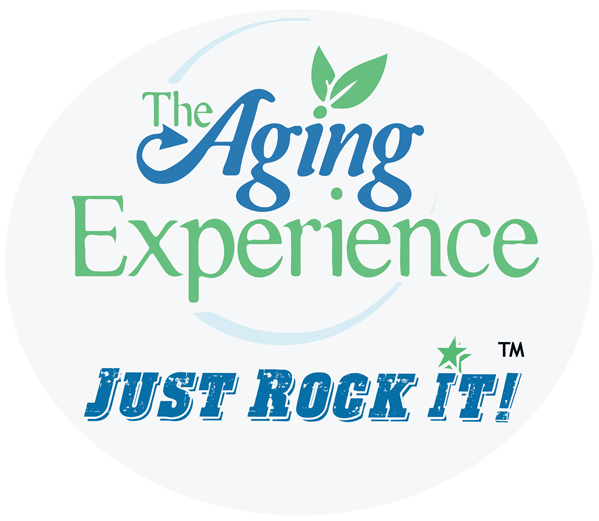Ninety-Two Percent of Caregivers Are Financial Caregivers
Ninety-Two Percent of Caregivers Are Financial Caregivers – Coordinating and Managing Finances for Loved Ones, and Spending $190 Billion on Them Annually
A Merrill Lynch study, conducted in partnership with Age Wave, finds that the 40 million1 family caregivers in the U.S. spend $190 billion per year on their adult care recipients. Despite the financial, emotional and functional challenges in this life stage, preserving the dignity of their loved one is their primary goal. The vast majority of caregivers (91 percent) are grateful they could be there to provide care, and 77 percent say they “would gladly do so again.”
Family caregivers are America’s other social security, providing the bulk of long-term care today. The aging of the baby boomers will result in unprecedented numbers of people in America needing care. As a caregiving crunch is upon us, “The Journey of Caregiving: Honor, Responsibility and Financial Complexity” offers an in-depth look at Americans’ financial and emotional journeys during this life stage. This study marks the beginning of a new, multiyear research series from Merrill Lynch and Age Wave that will examine five distinct life stages: early adulthood, parenting, caregiving, widowhood, and end of life.
As the first of the series, this study examines the responsibilities, sacrifices and rewards of caregiving – a life stage that nearly all Americans will participate in, as a caregiver, care recipient or both. This study comprehensively explores the topic of financial caregivers – a role largely unexamined, yet held by 92 percent of caregivers. Financial caregiving involves contributing to the costs of care and/or coordinating or managing finances for a care recipient.
The study is based on a nationwide sample of more than 2,200 respondents, including 2,010 caregivers. Key findings about their caregiving journey include:
- Much more than hands-on care. Providing emotional support (98 percent), financial caregiving (92 percent), household support (92 percent) and care coordination (79 percent) far outweigh physical care (64 percent).
- Financial costs – with little discussion of their ramifications. Seventy-five percent of financial contributors and their care recipients have not discussed the financial impacts of these contributions.
- Caregiving for a spouse vs. for a parent. A spouse is 3.5 times more likely to be the sole caregiver looking after a care recipient, and is more likely to spend more out of pocket on care-related costs. Their caregiving journey is also different in terms of the obligations and financial interdependencies they hold with their loved one.
- Caregiving gender gap. Both for cultural and biological reasons, women are more commonly caregivers for spouses and parents, averaging six years of caregiving in their lifetime versus four years for men.2 As a result, women are disproportionately impacted by the challenges of caregiving, including struggling to balance responsibilities and making career sacrifices. And then, more find themselves alone and without someone to care for them when needed.
- Responsibilities extend beyond the care recipient’s life. Sixty-one percent of the time, caregivers expect their role will end with the death of their loved one. However, the complexities of financial, legal, and other aspects of caregiving often continue for months, or even years.
Financial caregiving: Navigating complexity and responsibility
The study finds that 92 percent of caregivers are also financial caregivers, and are contributing to and/or coordinating finances for their loved one. In fact, after two years of receiving care, 88 percent of care recipients are no longer managing their finances independently.
Financial caregiving is often far more complex than simply contributing to the recipient’s care. Financial caregivers are responsible for a wide variety of tasks, including:
- Paying bills from their recipient’s account (65 percent).
- Monitoring bank accounts (53 percent).
- Handling insurance claims (47 percent).
- Filing taxes (41 percent).
- Managing invested assets (21 percent).
Health care rises as top challenge. Respondents find that navigating health insurance expenses is the top challenge of financial caregiving (57 percent). An estimated 49 percent of financial caregivers don’t have the legal authorization to perform their role.3 Sixty-six percent of caregivers feel they could benefit from financial advice.
Costs and compensations of caregiving
Costs:
- Nearly three quarters of respondents say they’ve made numerous sacrifices as a caregiver – whether familial or professional.
- Fifty-three percent have made financial sacrifices to compensate for caregiving expenses. Thirty percent of caregivers say that they have had to cut back on expenses, and 21 percent have had to dip into personal savings.
- Two in five caregivers under the age of 64 have made sacrifices at work due to caregiving responsibilities, including reducing their hours (17 percent) and leaving the workforce (16 percent).
Compensations:
- Caregivers feel rewarded knowing they are doing something good for someone they love – 61 percent say the greatest benefit of providing care is the sense that they have “done the right thing.”
- Seventy-seven percent say they would gladly take on being a caregiver for a loved one again.
- Forty percent report a strengthened bond between themselves and the care recipient, and 24 percent say caregiving brought their family closer together.
- Eighty-six percent say watching their loved one’s health struggle was a motivator that caused them to place more value on taking care of their own health.
“Caregiving is one of today’s most complex life stages, throughout which hard work, high stress and heavy obligations intertwine with honor, meaning and resilience,” said Ken Dychtwald, Ph.D., CEO and founder of Age Wave. “This experience becomes even more emotionally complex and financially challenging when caring for loved ones suffering from dementia or Alzheimer’s. Even with that added burden, this study reveals that 65 percent say that being a caregiver brought purpose and meaning to their life.”
The crucial role of employers
Employers can play an integral role in supporting caregiving employees during this demanding life stage. While 84 percent of employers say caregiving will become an increasingly important issue in the next five years, only 18 percent strongly agree that their workplace is currently “caregiving-friendly”4 – underscoring the need for new approaches and solutions across the workforce.
“Meaningful, well-designed employer benefits can make a crucial difference in helping caregivers navigate the high stress of caring for a loved one, and help them balance these responsibilities with the rest of their working and financial lives. Just as child care has been an issue in the past that led to revolutionizing HR benefits, the aging of the population means we need to consider how caregiving is becoming an increasingly important issue for employers and employees,” said Kevin Crain, head of Workplace Solutions for Bank of America Merrill Lynch. “These should include resources and programs focused on addressing caregiving complexities and employee networks that facilitate support from experts and peers.”
1 AARP, 2015, Caregiving in the U.S.
2 National Academies of Sciences, Engineering, Medicine, 2016
3 AARP, 2015, report: Family Financial Caregiving: Rewards, Stresses, and Responsibilities
4 Northeast Business Group on Health & AARP, 2017. Caregiving in the Workplace: Employer Benchmarking Survey
Alzheimer’s Association Trial Match – Smilecast 73
Alzheimer’s Association Trial Match
Every 70 seconds someone in America develops Alzheimer’s. In 2050, experts project there will be nearly one million new cases annually.
The Alzheimer’s Association has developed TrialMatch, a confidential interactive tool that provides comprehensive clinical trial information and an individualized trial-matching service for people with Alzheimer’s disease and related dementias.
The web-based patient and clinical trial matching service is also accessible via a toll-free telephone number: 800-272-3900.
Participants create a TrialMatch profile. The Association compares your unique profile to its comprehensive, up-to-date clinical trial database. With patient’s permission, a Contact Center specialist contacts people with unbiased trial result options and trial site contact information.
Podcast: Play in new window | Download
Subscribe: Apple Podcasts | RSS
Homebound Seniors Twice as Likely to Develop Alzheimer’s – Smilecast 72
Homebound Seniors More at Risk for Dementia
Homebound seniors are twice as likely to develop Alzheimer’s disease as more active individuals.
Investigators at Rush University Medical Center in Chicago followed 1,294 seniors from two separate studies. None of the study subjects exhibited dementia symptoms at the beginning of either study.
During an average of 4.4 years, 180 participants developed Alzheimer’s. Of this group, patients who self-reported that they never left their home environments during an average week were two times as likely to develop Alzheimer’s than those who periodically traveled out of town.
Podcast: Play in new window | Download
Subscribe: Apple Podcasts | RSS
HOW TO BE A SUCCESSFUL LONG-DISTANCE CAREGIVER
The Challenges of Being a Long-Distance Caregiver
I had the distinct pleasure of interviewing Amy Goyer, family caregiver expert for AARP, as part of our virtual Caregiver Smile Summit. We spoke about long-distance caregiving and being a
long distance caregiver.
Amy has been a caregiver for her grandparents and for her parents so she knows the long-distance caregiving space well. She cares for her father who has Alzheimer’s. And while she lives with him, she travels a lot for her work.
A big concern for her is the idea of not knowing what’s going on when the caregiver is not present and the emotional toll that takes on people. A lot of long-distance caregivers also have caregiver’s guilt.
Research indicates that long-distance caregivers actually spend more money than other caregivers. Travel expenses, paying for in-home caregivers, etc. attribute to some of those.
I’m well acquainted with the latter reason. When my mom lived in Florida, and before she moved to North Carolina to be with me, my wife and I paid for her to live in a condo that we bought.
My sister was five minutes away and looked after her, but we took the financial hit. That way we could, as I say, “separate the combatants” – those being my sister and my mother. They fought like cats and dogs the short time mom lived with my sister when she initially moved to Florida.
Making the Most of Visits
Some long-distance caregivers only get to visit during holidays and get a wakeup call! When you do get a chance to visit, Amy encourages people to get a good hold of what is going on.
Look at the living situation. Is it safe? What is their support system? What is their overall quality of life – not just their health, but their wellbeing in general? Do they have a social life? Are they managing their finances or are you seeing signs of neglect, fraud or abuse?
In-person visits are essential, and if you are not there, you need to make sure you have people in place who become your eyes and ears.
Hire When Needed
Aging Life Care Specialists (they used to be called Geriatric Care Managers) can manage a situation for you if no one is in place locally.
They can assess the situation, monitor the situation, align services, shop and advocate for the person. An in-home care professional often can help. Area Agencies on Aging (in the U.S.) can also come out and do an assessment on a loved-one’s situation.
There Is a Lot You Can Do from a Distance
- You can manage mom and dad’s finances. Technology makes that easy.
- You can make doctor’s appointments.
- You can research medical issues and treatments.
- You can purchase supplies and have them sent to the house like supplements and vitamins.
- You can even do grocery shopping long-distance and order meals.
- Call mom and dad every day. It can make their day and change their mood.
Amy says you have to be creative. Just because you are not there does not mean you cannot contribute. You can.
Use Technology to Make Life Easier
You can monitor a loved-one with video cameras. You can install motion sensors that can detect falls and inactivity. You can monitor medication compliance. These can be set up so you receive alerts.
Amy particularly likes all of the emerging home safety technologies. You can have digital locks on the door where you can allow the home helper in when they get here. Cameras allow you to check and make sure it’s the person who is supposed to be there.
Heck, my wife and I set up special codes for trusted vendors to allow themselves in the house during certain times. The “I’ve Fallen and Can’t Get Up” buttons have become more sophisticated. Some have GPS built in so you can know at all times where mom and dad are.
Telemedicine capabilities allow you to monitor mom or dad’s vital signs. There are all kinds of apps, too. Search for them by keywords like caregiving.
Obviously, before you embark on this you want to make sure mom and dad are cool with it. There is a fine line between intrusion and helping!
Build a Support System for Your Loved One
A support system is vital when you can’t be there. Amy first sends people to the Area Agency on Aging in their locale. While that is a U.S. phenomenon, readers no doubt have aging services agencies run by government entities locally.
An assessment from that type of agency can prepare you for what you need to do first. Often it starts with one thing, like making sure mom and dad are eating well. Services like Meals on Wheels could be vital extensions of your care team.
You can be guided to adult day services, home care agencies, chore services, etc. Find volunteer and non-profit organizations locally that can help. If mom or dad served as a veteran, often there are many services available, in addition to funding!
Faith-based organizations also can offer support. Our local Catholic church started a day program at the parish, totally free. Of course, neighbors can be a great resource to help with chores as well. You should pay them but you may find that they will do it for free.
It’s a bonus that neighbors can keep an eye on mom and dad too. Even the postman can be your eyes and ears if they see mail and newspaper piling up!
While the context of this article is about mom or dad living at home, you still have to be just as vigilant if mom or dad are in a care facility.
Want to learn much more to make your caregiving journey easier? Register for the Caregiver Smile Summit today!











